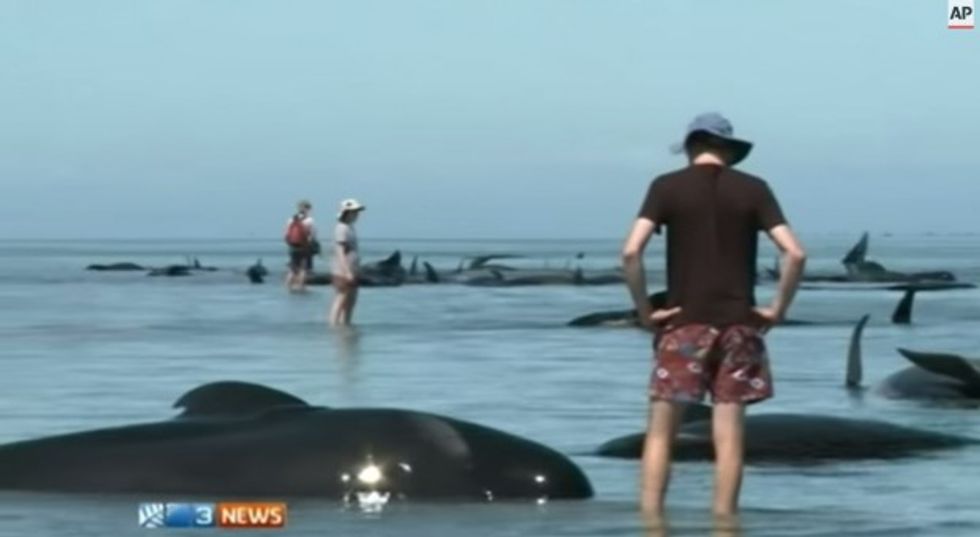
One of hundreds of beached wales dying in New Zealand Friday. (Image via AP/YouTube)

WELLINGTON, New Zealand (TheBlaze/AP) — About 140 pilot whales that stranded themselves on a remote stretch of New Zealand beach have died, but conservation workers and volunteers are hoping the remaining 60 or so will survive after they managed to get them refloated, an official said Saturday.

"There's a lot of young ones out there that have already passed away. It's been quite an emotional time for our staff," said Department of Conservation area manager Andrew Lamason. "The whales also go through a lot of physical and emotional trauma."
But why did the whales become stranded in the first place?
The geography of Farewell Spit on the South Island seems to work against whales, which regularly become stranded there. The stranding of 198 whales on Friday was one of the largest in recent years and prompted 80 workers and volunteers to help out.
By late Saturday, 140 of the whales had died, Lamason said.
He said the workers and volunteers worked throughout the day to keep the surviving whales watered and covered before refloating them during Saturday night's high tide.
Watch video from the tragic scene below:
"We've had a really good crew of volunteers, and people have been wanting to come from all over the country," Lamason said.
He said the surviving whales had moved to deeper water. But he cautioned that while hopes for their survival were high, whales had been refloated in the past only to return and get stranded again.
Lamason said the scale of the stranding has been tough on the helpers, both physically and emotionally.
"It's very sad, they're very intelligent animals," he said. "The pragmatic view is that it's part of nature."
The focus will now turn to the dead whales, and the enormous task of dealing with the carcasses, Lamason said, adding that while in the past helpers have typically buried them in the sand, he's not sure what the approach will be this time.
He said the department had been experimenting with tethering or moving carcasses into the water, which has the advantage of providing food for other sea creatures.
Experts describe Farewell Spit, located on the northwest corner of the South Island, as a whale trap due to the way its shallow waters seem to confuse whales and diminish their ability to navigate.
"Possibly the leader is sick or disoriented and the herd simply follows the leader or a young whale may strand by accident and the rest of the herd try to come to the rescue," explained the New Zealand Department of Conservation on its website. "They may run into problems when the shoreline is gently sloping; sand and mud absorb the sonar signals they use for navigation, giving a false indication of deeper water."
—
Follow Zach Noble (@thezachnoble) on Twitter